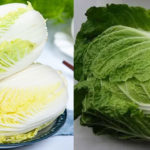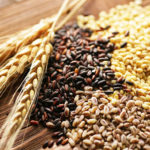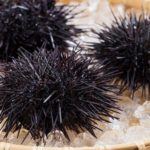There has always been a debate about whether to peel or not to peel mung beans before cooking. Some people believe that the outer skin of the mung bean is inedible or unattractive, but is that really the case? Let’s explore the differences between peeled and unpeeled mung beans and determine which type is better for your health and culinary needs.
1 Differences between peeled and unpeeled mung beans
Color: Peeled mung beans have a beautiful yellow color, while unpeeled mung beans are green.
 Peeled mung beans
Peeled mung beans
Taste and Aroma: Peeled mung beans have a nutty and sweet flavor, while unpeeled mung beans offer a similar taste with an added earthy aroma.
Nutritional Benefits: Peeled mung beans are known for their ability to boost energy, cleanse the body, soothe the liver, treat ulcers, improve eyesight, lower blood pressure, and aid in weight loss.
 Unpeeled mung beans
Unpeeled mung beans
In addition to sharing similar health benefits as peeled mung beans, unpeeled mung beans stand out due to their high flavonoid content. These compounds effectively inhibit the growth of cancer cells, reducing the risk of prostate and breast cancer. They also possess detoxifying properties and help prevent eye-related issues.
2 Which is better to consume – peeled or unpeeled mung beans?
Both types of mung beans are packed with essential nutrients, including protid, carbohydrates, fats, and dietary fiber. They are also rich sources of vitamins E, B1, B2, B3, B6, and C, along with pre-vitamin K, acdia folic, and minerals such as calcium, magnesium, potassium, sodium, zinc, and iron.
While peeled mung beans are commonly used in desserts and porridge due to their aesthetic appeal, it is important to note that this practice is somewhat misguided. Although peeled mung beans retain their nutritional value, they lose a significant portion of their detoxifying and cooling properties.
As mentioned earlier, the outer skin of the mung bean is where most of its detoxifying benefits lie. Therefore, it is recommended to consume unpeeled mung beans whenever possible. Furthermore, peeled mung beans are more susceptible to nutrient loss due to the absence of the protective outer layer.
However, for individuals who find the texture of unpeeled mung beans unpleasant or difficult to swallow, peeled mung beans are a viable alternative. This is also true for young children who may have trouble chewing the unpeeled variety.

Important considerations when consuming mung beans:
– While mung beans offer numerous health benefits, it is important to consume them in moderation. Typically, adults should aim for 2-3 servings per week. Excessive consumption may lead to stomach and intestinal issues. For women, overconsumption can result in abdominal bloating and menstrual pain.
– Individuals with cold stomachs or those with a naturally cold body constitution should avoid consuming large amounts of cooling foods like mung beans.
– Do not eat raw mung beans as a remedy, as some people have experienced toxicity symptoms such as dizziness, fainting, and vomiting.
– Avoid consuming mung beans on an empty stomach, as their cooling nature may cause discomfort in sensitive individuals.
– If you are taking traditional Chinese medicine or any other herbal supplements, refrain from eating mung beans simultaneously as they may interfere with the absorption of the medication.

In conclusion, both peeled and unpeeled mung beans offer unique benefits, but for optimal nutrition, it is advisable to opt for unpeeled mung beans whenever possible. This ensures that you reap the full range of health benefits that this versatile legume has to offer.





































